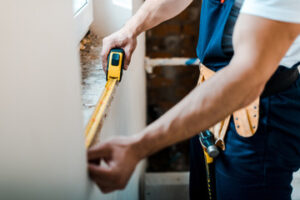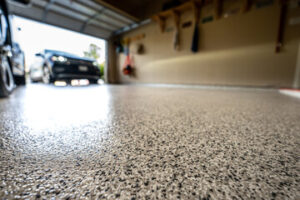Charleston Upright Piano Moving is a difficult process that requires special equipment and expertise. Hiring professional movers will ensure your piano is safely moved through doorways, hallways, and stairwells.

Performing a move without proper training is dangerous and may damage your instrument. It also poses health risks to the movers involved.
Pianos present unique logistical challenges during relocation due to their size and weight. Improper handling and preparation can result in expensive repairs or damage to the instrument itself. To minimize these risks, it’s recommended that homeowners enlist professional movers for this task. However, if you’re determined to move your piano on your own, make sure you’re prepared with proper supplies and knowledge of the process.
Before moving day, it’s important to prepare the space for your upright piano by clearing a path and removing any obstacles. Also, be sure to double-check all measurements of doorways and hallways in advance to ensure the instrument will fit. If possible, disassemble the legs and pedals to reduce their weight.
Once you’ve gathered the necessary supplies, it’s time to assemble your team. At least four people are needed to successfully lift and transport a piano, with two on lifting duty and multiple people assisting in the direction of movement. Additionally, all team members should be dressed in comfortable clothes and shoes with no dangling accessories or jewelry. This prevents injuries during the move and keeps dangling items from getting caught on or damaging the piano.
If possible, it’s a good idea to use a piano dolly for short distance moves. This four-wheeled device allows you to roll the piano along flat surfaces, avoiding the need to carry it up and down stairs. Also, consider obtaining a set of heavy-duty furniture straps for securing the piano during transportation, as well as a few piano moving blankets to protect the instrument from scratches or dents.
For longer distances, you’ll need a climate-controlled truck and a loading ramp to safely secure the piano. To reduce the load’s weight, you can remove the lid and pedals, but be sure to lock them securely and pad the insides of the piano with a thick mattress or blankets. Also, don’t forget to pad the back of the truck to prevent shifting during transit.
On move day, plan to start the process at one end of the piano and work your way around. Having one person in each corner of the piano (or on each side for grand pianos) will help control the movement and prevent it from tipping or falling.
Lifting
Upright pianos are heavy and structurally delicate, making them a challenge to transport. Whether you’re moving a studio or grand piano, it requires careful planning and preparation to prevent damage to the instrument and your property.
Enlist a team of people: It’s best to have at least four people to lift and maneuver the piano. This includes people who will hold the sides of the piano and people who will wheel the dolly. Ideally, these individuals will be fit and experienced in lifting heavy objects. They should also wear appropriate clothes and footwear with good traction. Sturdy work gloves will enhance grip and provide additional protection.
Plan the route: It’s important to know where you’re going and how to get there. Walk the intended path and examine areas such as doorways, hallways, and staircases to identify any tight spots that could limit your ability to navigate the piano. Make notes and remove items such as door frames or shelves that might impede the piano’s movement.
Protect the piano: Cover the piano with moving blankets and secure them with tape. This will keep the instrument clean and dry during transit and minimize damage to the keys and pedals. If you have a dolly, position it near the center of the piano. Then, have one person gently tilt the piano and another lift it onto the dolly. After the piano is loaded, secure it with moving straps to ensure that it remains stable throughout transportation.
Loading and transporting
Once you’ve positioned the piano on the dolly, wrap it with additional blankets and secure them with tape. This process can take some time. Be sure to take breaks as needed to avoid fatigue. Once the piano is loaded, transport it to its new home. Once the piano is unloaded, place it against an inside wall, as this will reduce the risk of cold air or moisture damaging the instrument. If you need to transport the piano up or down stairs, use a ramp for safety and convenience.
Transporting
Pianos are very large and very heavy, so moving them requires careful planning and specialized equipment. It is best to have professional movers take care of the job, as they are specially trained and experienced with handling these types of delicate instruments. However, if you insist on doing it yourself, be sure to plan for the move well in advance and gather all the necessary supplies. You will need furniture blankets, piano dollies and padded straps to protect the instrument during transporting. Also, you should consider obtaining a truck or van with a ramp or lift to make loading easier.
Start by measuring all the passageways and doors that you will need to take the piano through, including stairways. This will help you determine if the piano will fit through these areas, and you can avoid taking it to a door that it cannot fit or down a staircase that is too steep. You should also remove all items that may obstruct the piano’s path from its current location to the truck or van. This includes items like lamps, tables and end tables, and if possible, you should remove carpets from the area that will be used to transport the piano.
On the day of the move, assemble a team of people to help you move the piano. You will need at least four people, and ideally, you should have one person with experience lifting and carrying heavy objects. Also, be sure that everyone is wearing comfortable clothes and footwear with good traction.
Before you begin loading the piano, secure the padded straps around the body and legs of the instrument. Then, place the piano on a dolly that is rated to support its weight. Make sure that the dolly is placed on a flat surface and not on an incline, as this could cause damage to the piano.
Once the piano is loaded on the truck or van, it is a good idea to have someone stand guard while the piano is being transported. This way, if any problems should occur, the monitor can be contacted immediately and the problem can be fixed before it becomes worse. After the piano has been unloaded at its new location, be sure to schedule a tuning appointment for it. This will help it to become acclimated to its new environment and to tune correctly.
Unloading
Pianos are extremely heavy, and misjudging their weight can result in serious injuries to both people and property. Professional movers use proven lifting techniques to distribute weight evenly and maintain control throughout the moving process. They also prepare the instrument for transport by securing pedals and other loose components, and wrapping it in blankets to protect against scratches and dents.
If you choose to move an upright piano yourself, enlist a team of helpers to assist. More hands will make the task lighter and easier, and it’s important to have all involved on the same page regarding your game plan. This may include removing doors from their hinges, planning a route that avoids flights of stairs, and determining how the piano should be positioned to prevent damage.
Measure any space where the piano will be repositioned in advance to verify that it can pass through without issue. This will prevent unforeseen problems that can arise from trying to fit the piano into a space that is too small. Trying to maneuver a piano through tight spaces can lead to countless expensive and time-consuming complications.
On moving day, prepare the piano for transport by positioning a furniture dolly adjacent to it and wrapping it in blankets. Be sure to securely fasten the moving straps on each side of the piano to ensure that it stays stable during transit. If your piano has a lid, be sure to tape it closed to prevent accidental opening during the move.
Once the piano is loaded onto the dolly, carefully guide it on to the truck and secure it with the straps. Be careful not to tip the piano excessively, as this can cause internal damage. If you have to transport the piano up or down a flight of stairs, consider using a ramp to prevent injuries and vehicle damage.
Unloading a piano from a pickup truck is challenging, especially if the vehicle is parked on an incline. The simplest way to avoid this problem is to park on level ground, and then set up a ramp before loading the piano. This will eliminate the need for a ladder, and it will ensure that the piano is safely lowered to the ground.




